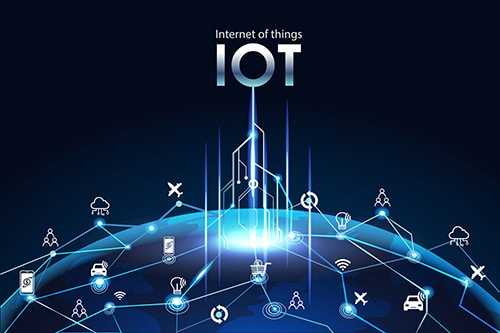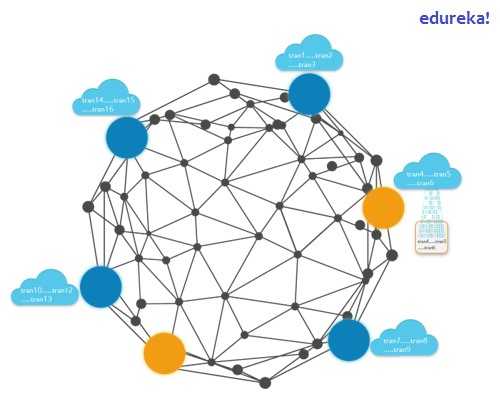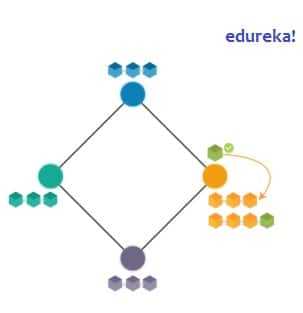How Blockchain & IoT Will Change the World
We have all heard about IoT and Blockchain Technology.
Most of us have a good understanding of how these two technologies are redefining connectivity, and in many cases, the internet itself. Some tech enthusiasts go as far as to say that Blockchain and IoT will be the foundations of the new internet, also referred to as Web 3.0.
Decentralization is the future of technology. This has been an approach which has piqued the interest of most major players in the tech genre for a long time now. The decentralization architecture offers several advantages when compared to traditional centralized systems which make it ideal in most web applications today.
But what makes Blockchain and IoT special? Why do they give rise to a whole new era in technology when combined? And, why should you get training and certification in IoT and Blockchain to start a career as bright as Sirius in the night sky?
Before we jump into how Blockchain and IoT work together seamlessly, let’s look at these two technologies separately to have a basic understanding of each of them.
IOT

Internet of Things is simply a network of physical devices embedded with electronics, software, sensors, actuators, and connectivity hardware that we use on a day-to-day basis.
The add-ons to these devices enables them to connect and exchange data whenever necessary. For all intents and purposes, we can look at them as the smart devices that almost all of us have become accustomed to.
Applications of IoT include:
- Smart Home Systems
- Wearables
- Connected Cars
- Smart Grids, and many more
Currently, most IoT architectures require a central hub or server which enables storage and transfer of data between the several devices in a network. As it might be, this approach is great, but it does have several fatal loopholes. We’ll see how Blockchain addressed these issues to improve on the current IoT systems.
An independent study reported by Forbes states that the global IoT market is expected to grow threefold from $157 billion in 2016 to a whopping $457 billion by 2020. That’s just four years!
Blockchain
For those who are not aware, Blockchain is a list of records, linked and secured by cryptography which are continuously growing and stored in all the systems in a given network.
As the definition suggests, this technology advocates the decentralization architecture by storing the data not in a central server, but in all the peers present in the network.
Blockchain is being used in almost all sectors today. These include:
- Finance and Cryptocurrency
- Data Storage and Transmission
- Smart Property
- Smart Contracts, and a lot more.
According to a Gartner study, Blockchain will add $3.1 trillion in business value by the year 2030. That’s a significant number.
Web 3.0: Blockchain and IoT
Now let’s look at how the souls of Blockchain and IoT can be combined to create the much-needed disruption for the next generation of the internet.
Large Scale Data Management

It is obvious that when several different devices are present in a network and each of them is constantly collecting data, the amount of data is ginormous. On top of this, an IoT system is managed by a central server which is responsible for thousands, if not millions of devices.
This makes it very Important to have three things setup— a storage system large enough to handle all the data, a processing system which will be able to work on the data and an efficient collection and delivery system.
While this may seem quite straightforward, all three of these resources are quite difficult to acquire and maintain.
Blockchain solves this issue quite gracefully. In a Blockchain network, there is no central entity that manages the data. Instead, each of the nodes have a copy of the data and can process them independently.
Once an argument is passed, the network tries to obtain a consensus from all the other nodes in the system. As soon as this is achieved, the transaction is processed. This same approach can be used in IoT to remove the involvement of a central server and all the limitations it comes with.
Up-time, Security and Privacy
One of the biggest drawbacks of a centralized system is that all the data collected and processed is stored in a central server. If the central server goes down all the devices will stop responding as they require signals and commands from this. Moreover, if the server is hacked, all the data present will be compromised. This could lead to unwanted consequences.

A Blockchain network is virtually impossible to hack. All the data stored in the network is encrypted and can be accessed by only those who are present in the network. To top it off, because of the consensus algorithm, this data cannot be tampered with.
Adding the fact that the data is not stored in a centralized fashion, there will be no issues of downtime or unresponsive devices because of server lags etc. This is possible because the IoT devices do not need to connect via a third-party. They can generate peer-to-peer connections to establish trust.
Economically More Feasible and Eco-Friendly
Servers used in today’s IoT infrastructure are specialized. And, logically, when it comes to specialization, most of the products are quite expensive. Using a distributed ledger system excludes the usage of a central server which in turn will reduce the overall cost of setting up.
On top of this, these servers have high maintenance prices because of the way they are designed and the functions they perform. This is also a huge saving if you use a distributed system instead of a centralized one.
Coming to how IoT’s implementation on Blockchain is green, the central servers are usually very power-hungry and sometimes require additional equipment for cooling and other purposes.
This equipment may generate unwanted environmental effects like emissions etc. Also, the power used to run a server is also nullified when employing a decentralized approach.
Conclusion
These are a few ways how Blockchain and IoT can come together to change the way modern technology works. Let’s recap a little and see how Blockchain addresses each of legacy IoT’s issues one by one:
- Blockchain is very secure and can be used to track the sensor data measurements. It can also prevent duplication of data with any other malicious data.
- Deployment of IoT devices is usually complex. A distributed ledger system can easily provide IoT device identification, authentication and seamless, secure data transfer. This makes the deployment much simpler.
- IoT sensors can exchange data without the interference of a third-party using Blockchain
- There will not be a single source of failure within the ecosystem. This protects an IoT device’s data from being tampered with
- Blockchain enables device autonomy and anonymity. The individual identity and integrity of data are secured, and the system also supports peer-to-peer communication
- Since there is no requirement of an intermediary, the deployment, operation and maintenance costs of IoT devices can be reduced by a lot using Blockchain
This shows that individually, the promise of blockchain and IoT are impressive. However, when the two technologies are combined they opportunities are endless.
Disclaimer: These are the writer’s opinions and should not be considered investment advice. Readers should do their own research.
